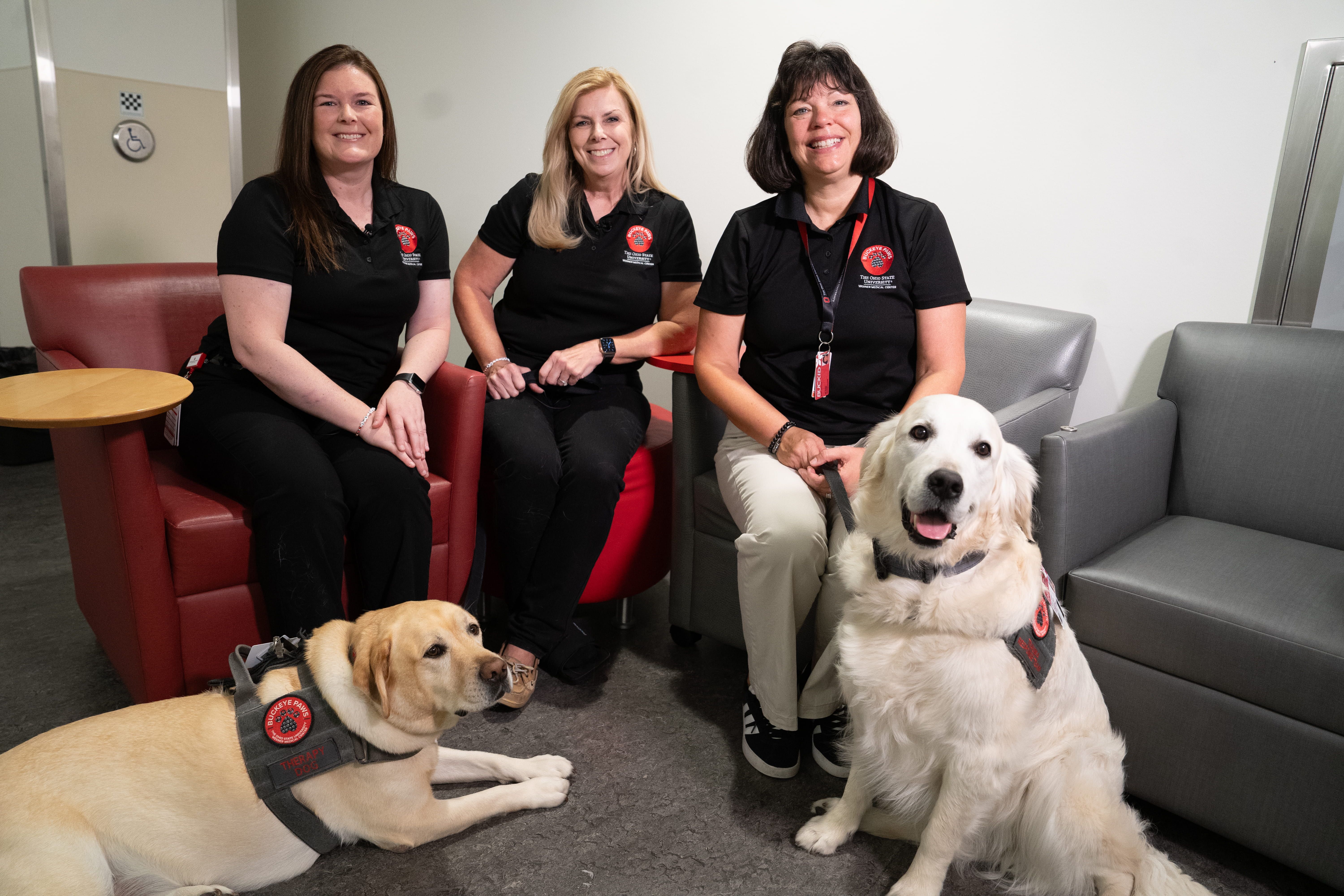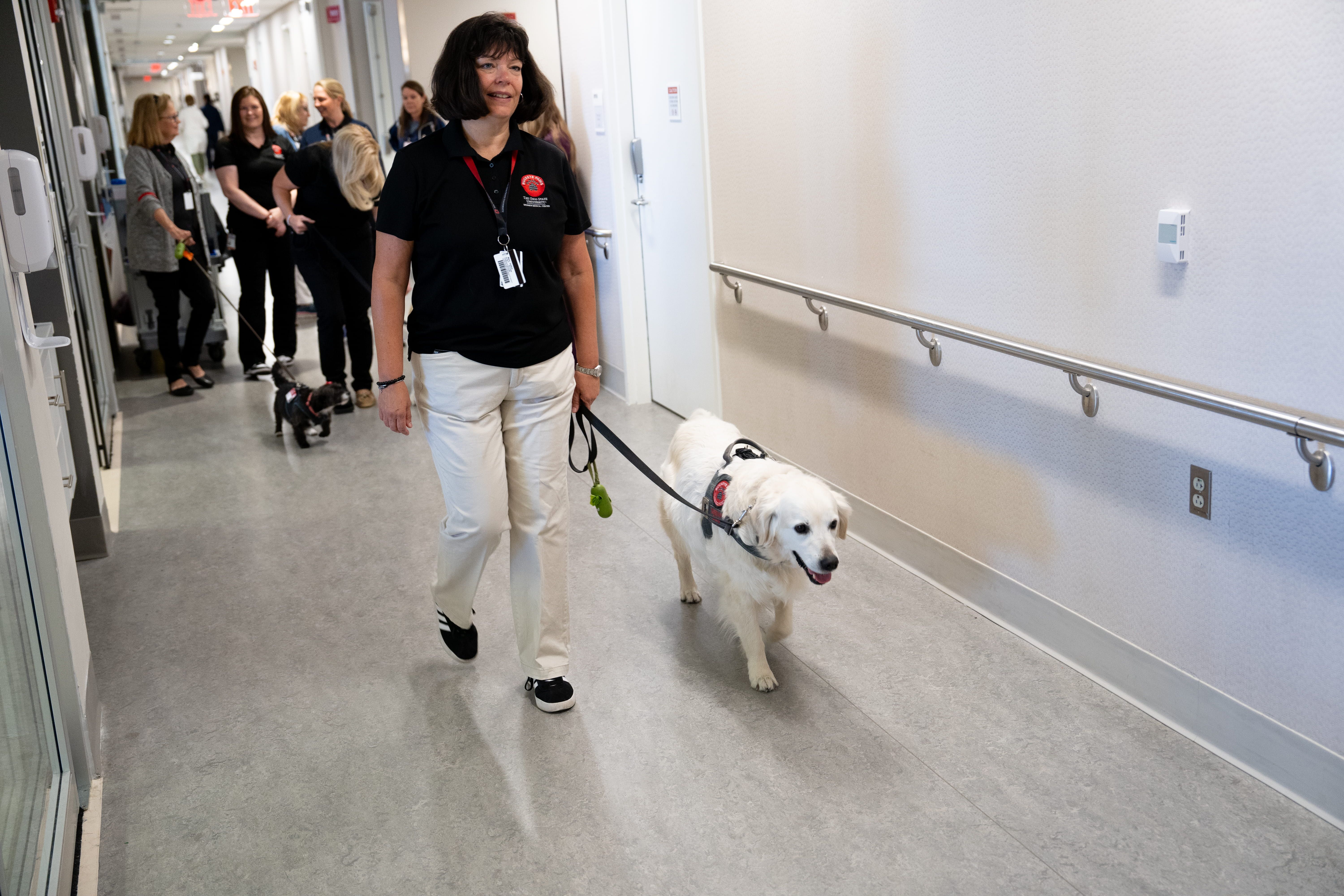Study Finds Therapy Dogs Boost Health Care Workers' Moods
Could this be the answer to burnout in healthcare workers?

Care Staffing Team
Published in News
Healthcare workers face immense pressure and stress daily, often leading to emotional exhaustion and burnout. To tackle these challenges, researchers at The Ohio State University Wexner Medical Center conducted a study on the effectiveness of therapy dog visits as a mood booster for hospital staff.
The findings? A furry friend.
Get Periodic Updates Straight To Your Inbox. Sign Up To Our Newsletter Today.

A Tail-Wagging Solution to Stress
“The recruitment for this study was incredibly easy because as soon as you said, ‘We're going to do a study assessing your response to therapy dog interaction,’ people were like, ‘I'm in!’” said Beth Steinberg, PhD, RN, principal investigator of the study.
The study evaluated 64 healthcare workers who participated in the pilot study during their shifts. These interactions were brief, with employees spending as much or as little time as they wanted, generally only a few minutes at a time, petting and playing with the trained therapy animals.
Despite the brief encounters, the results were overwhelmingly positive. Participants reported feeling significantly less stressed, anxious, and fatigued after spending time with the dogs.
The Buckeye Paws program, launched in March 2020, became a lifeline for workers at Wexner Medical Center as the COVID-19 pandemic intensified. Co-founded by Beth Steinberg and Mary Justice, this initiative employs highly trained therapy dog-handler teams to support healthcare workers. The program’s manager, Aimee Mitchell, ensures all dogs meet strict certification and training standards, including Canine Good Citizenship certification.
This aligns with existing research showing how animals can lower cortisol levels (a stress hormone) and increase the release of oxytocin, which promotes feelings of happiness and calm.
How the Program Works
The therapy dog program is designed to be accessible and flexible for hospital staff. The dogs, accompanied by their handlers, visit various units in the hospital on a scheduled basis. Workers can take a few moments out of their busy day to connect with the animals.
“There was free interaction with the dogs that people could spend as much or as little time as they wanted with the dogs,” explained Steinberg. “Prior to their interactions, we asked them to fill out a basic one to 10 mood scale. And then, after the interaction, they did that again.”
The interactions are generally brief, but they make a big impact. Staff members reported immediate improvements in mood, decreased perceived stress, and reduced feelings of emotional exhaustion and burnout.

The Answer to Caregiver Burnout?
Caregiving is one of the most emotionally demanding professions, whether it’s nurses, doctors, or other healthcare workers. Long hours, intense workloads, and the emotional toll of caring for patients often leave caregivers feeling burned out.
The Buckeye Paws program’s pilot study, which included 64 healthcare workers from various units, found that positive mood nearly doubled after interacting with the dogs. Participants, including physicians, nurses, therapists, and administrative staff, self-reported immediate decreases in emotional exhaustion, depersonalization, and burnout.
Read more: Caregivers Don’t Just Need Recognition, They Need Help
Burnout in healthcare can lead to decreased job satisfaction, mental health challenges, and even a drop in the quality of patient care. Leaders need to address this issue as soon as possible.
And therapy dogs might be an unexpected ally in the fight against burnout.
Why This Matters Now
The COVID-19 pandemic highlighted the mental health struggles of healthcare workers, bringing much-needed attention to their well-being. Programs like these offer a practical, cost-effective way to support those on the frontlines.
Incorporating therapy dogs into hospitals doesn’t just temporarily lift people’s spirits. This small gesture is part of a larger strategy to create healthier work environments for caregivers. While therapy dogs might not solve every problem, their wagging tails offer a simple reminder to pause, breathe, and recharge.
Looking Ahead
As the program gains traction, researchers are hopeful it will inspire similar initiatives nationwide. From hospitals to schools and workplaces, therapy animals could play a larger role in promoting mental health.
For now, the therapy dog program at The Ohio State University Wexner Medical Center is proving one thing: Sometimes, the best medicine doesn’t come from a bottle. It comes with four paws and a wagging tail.

News
Could $1 Trillion in Medicaid Cuts Leave 16 Million Uninsured? Senate HELP Committee Wants Your Take
Have your say: How will $1T+ in Medicaid cuts affe...

News
Nannies, Tired of Job Creep? Here’s How to Break the Cycle for Good!
Fed up with job creep? Learn how nannies can set c...

News
Healthcare Employment Surges in May with 62,000 New Jobs
U.S. healthcare added 62K jobs in May, led by hosp...

News
Wisconsin Seniors Housing Secures $28 Million Bridge Loan
MONTICELLOAM closes $28M bridge loan for two Wisco...